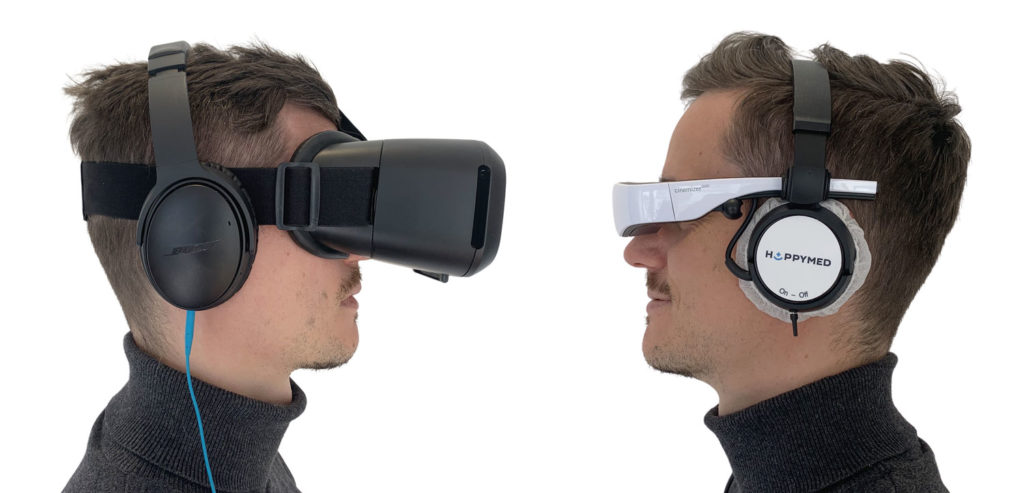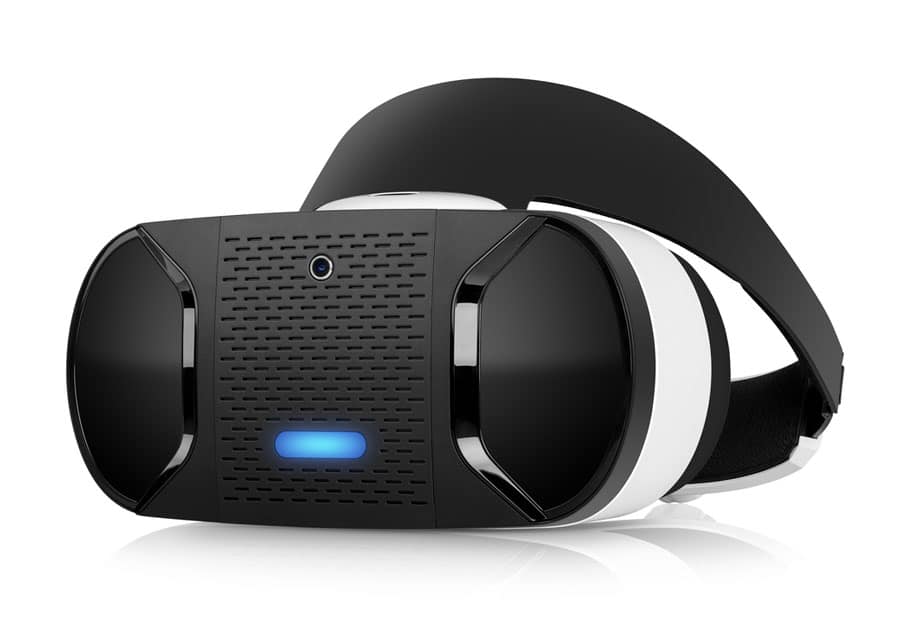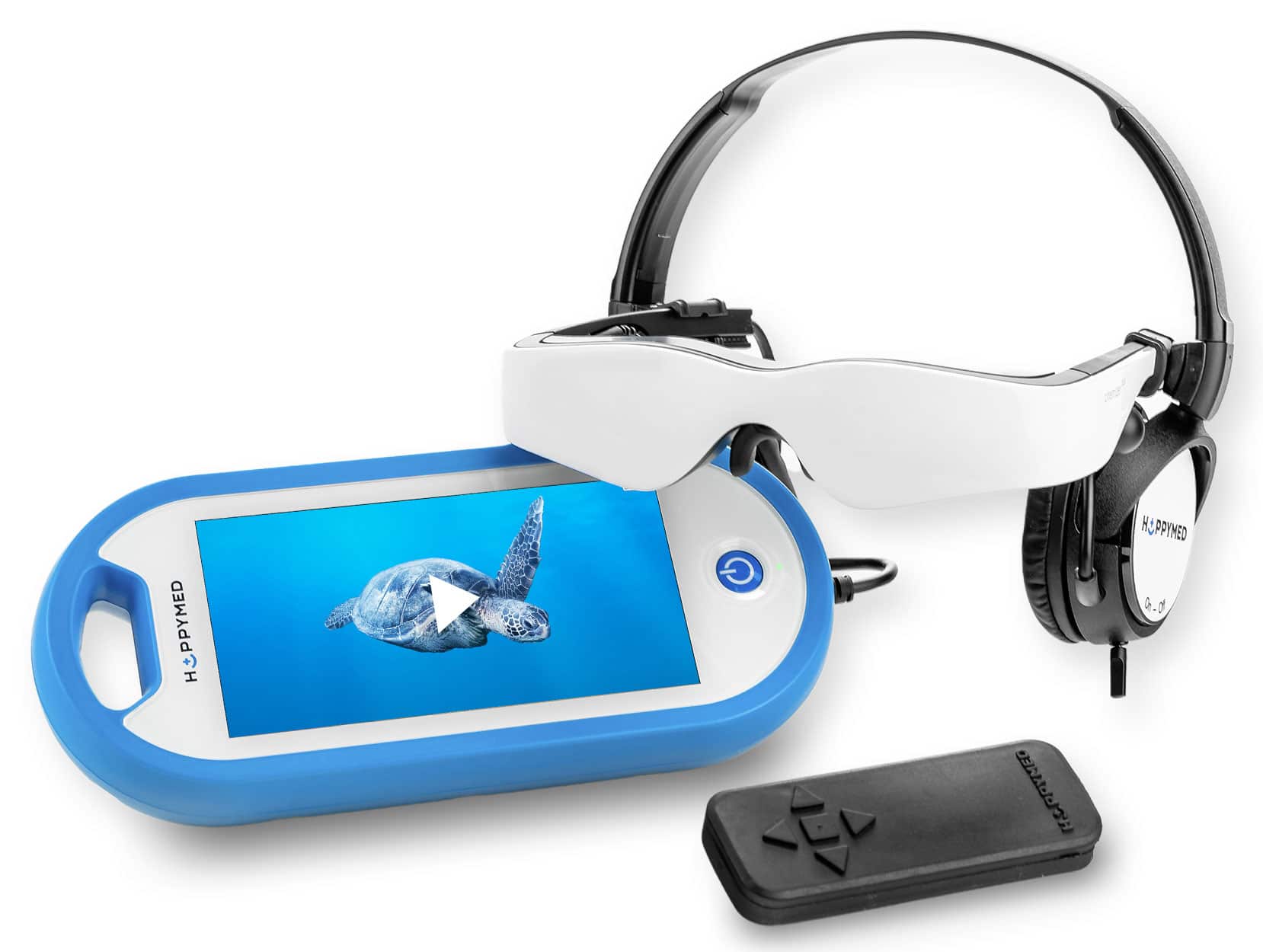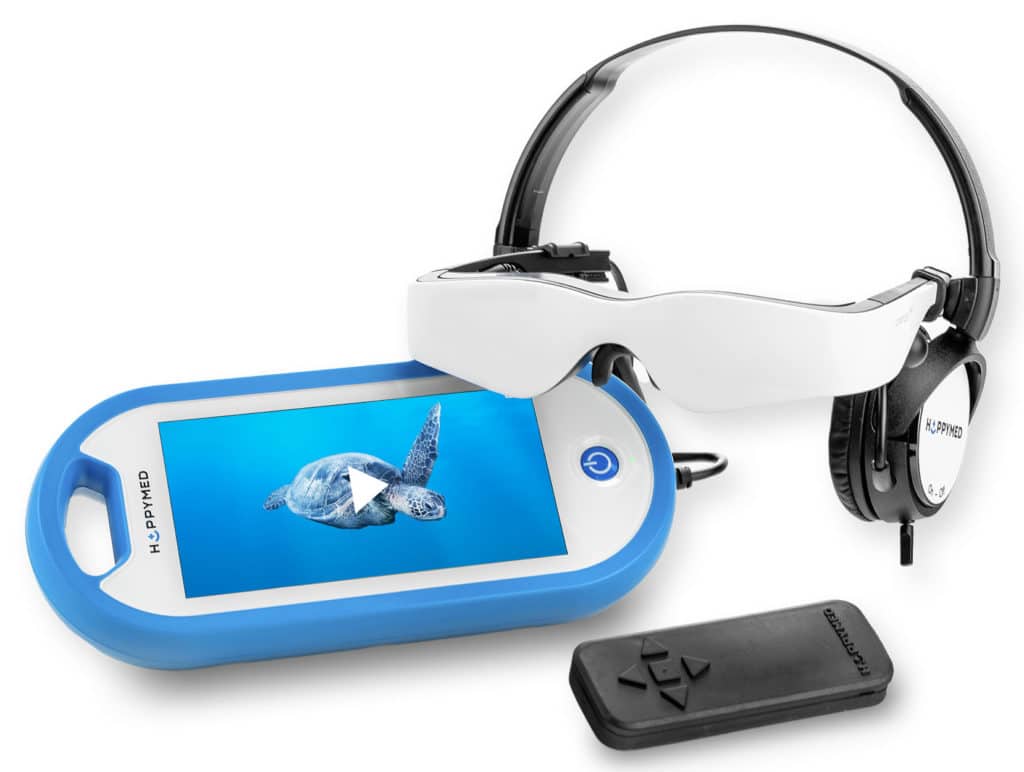
Virtual reality glasses, or VR glasses for short, are a popular tool in the entertainment industry. The glasses give the wearer the feeling of being in the middle of the action. However, some people experience undesirable effects when wearing VR glasses. This risk should be taken into account, especially in the case of medical interventions.
According to initial studies, every second user of VR glasses already has a negative experienced when wearing the VR glasses; the older the patient, the higher the risk of it. This phenomenon is called VR disease and is described in published studies. VR glasses providers rarely discuss this topic.
2D glasses allow the wearer a film experience like in the cinema – without side effects. Because the film is shown two-dimensionally on the screen, this guarantees the patient a completely natural cinema experience in “small format”.
HappyMed video glasses – 2D glasses – have been used for audiovisual sedation in 127 clinics in Germany , Austria, and Switzerland since 2014. In numerous anesthesia departments, HappyMed is the method of choice for calming stressed and frightened patients before, during and after surgical procedures. In the field of cardiology, HappyMed is used in cardiac catheter laboratories, among other things; in dermatology, the positive effect of HappyMed in calming severe pruritus is currently being researched. Further areas of application are emerging.
Comparison of VR glasses vs. HappyMed video glasses
Here you can find out why HappyMed relies on 2D glasses in the health sector and which advantages are associated with them:
Virtual reality glasses

|
HappyMed Video Glasses

|
|
|---|---|---|
| weight | VR glasses weigh between 500 and 900 g incl. Headphones. | The HappyMed video glasses weigh only 150 g incl. video glasses and headphones. |
| In action |

|

|
| Comfort | Due to the high weight, VR glasses have tension straps and are tightly strapped on the head. This creates pressure points and the wearing comfort decreases significantly after 30 minutes. | THIS MAKES NO SENSE The light construction allows the use of glasses temples and ensures a comfortable fit for 60 minutes. |
| technology | The wearer / user of VR glasses is motivated to move their head in different directions. The patient's head movements can impair or even prevent medical interventions. | When wearing the HappyMed video glasses, the patient sees the entire picture or the film just like in the cinema. The complete cinema view enables the patient to watch the film in a resting position; there are no unwanted movements of the head. |
| Possible side effects | Initial studies show that more than half of VR users have experienced discomfort while using them. The most common symptoms are similar to seasickness and are malaise, headache, nausea, fatigue, and apathy. In addition, people over the age of 50 seem to be more prone to these. | The HappyMed video glasses are classic two-dimensional video glasses (2D) connected to headphones. The HappyMed video glasses are therefore very well suited for use in the medical field and the occurrence of VR disease or other side effects can be ruled out. |
| Visual acuity | It is often not easy to adjust the visual acuity and small changes in the distance between the VR glasses, and the eye can quickly blur the whole picture again. Furthermore, visual acuity cannot be adjusted separately for each eye. | For a sharp image, the visual acuity needs to be adjusted separately for both eyes. In this way, the image quality is optimally used. |
| Patient communication | The patient's field of vision is 100% obscured. The anesthetist cannot see how the patient is doing by looking at the eyes and the patient can be startled when touched or spoken to because they did not expect it. | The field of vision is covered by approx. 70%, so the patient can look up or down something above or below the glasses. The medical staff also have the opportunity to stay in contact with the wearer. |
| Hardware and software certifications | Partly Hardware and software are certified as a medical product if both are produced in-house, but often only the software is certified as a medical product, since VR consumer glasses are purchased separately. In such cases, safe use in medical interventions cannot be guaranteed and there is a liability risk for the user. | Cert. Medical device class 1. The hardware and software complies with Directive 93/42 / EEC on medical devices. The device can therefore be used safely for all medical interventions (in the operating theater). |
| Support | Direct hardware support may not be possible. | Hardware and software are produced directly by HappyMed GmbH. HappyMed provides appropriate support regardless of whether it is software or hardware. |
| Content | Therapeutic content: hypnosis (therapy), 3D music therapy. | Video films for relaxation and distraction. Relaxation trips, nature documentaries, comedies, Hollywood films, classical concerts, nature documentaries and children's films. |
| Duration of the content | 2 to 90 minutes | 5 - 125 minutes |
| Material, hygiene & cleaning | The inside of the VR glasses offers more space for the accumulation of hair and dandruff, which also makes cleaning more difficult. The tension belts are made of elastane and can absorb sweat and other (body) fluids that are difficult or impossible to remove / clean. | The video glasses have a compact design and offer little space for the accumulation of body particles. It can be disinfected and cleaned quickly and easily. The temples are made of 100% plastic and do not absorb any body fluids. The headphones are protected with hygienic pads for single use. |
| Country of manufacture | Belgium, Netherlands, France | Austria |
Sources:
-
Andreas Sieß, Sandra Beuck, Matthias Wölfel: Virtual Reality – Quo Vadis? How to Address the Complete Audience of an Emerging Technology (Full Paper). September 22, 2017 (researchgate.net [accessed August 15, 2018]).
-
Andre Garcia, Carryl Baldwin, Matt Dworsky: Gender Differences in Simulator Sickness in Fixed- versus Rotating-Base Driving Simulator. In: Proceedings of the Human Factors and Ergonomics Society Annual Meeting. Volume 54, No. 19, September 2010, ISSN 1541-9312, pp. 1551-1555, doi: 10.1177 / 154193121005401941 (sagepub.com [accessed May 11, 2021]).
-
Malte Klüver, Carolin Herrigel, Stephanie Preuß, Hans-Peter Schoener, Heiko Hecht: Comparing the Incidence of Simulator Sickness in Five Different Driving Simulators. September 18, 2015 (researchgate.net [accessed May 11, 2021]).
Get to know HappyMed video glasses better

Would you like to find out more about the functions of the HappyMed video glasses ? Then find out more on our product page .
HappyMed has already been used over 150,000 times in 127 German clinics (including Sana, Asklepios and Helios clinics). 92% of the patients would like to use HappyMed again. In over 80% of the cases, the medical staff enjoy working with HappyMed and in 45% of the interventions, the HappyMed video glasses save sedatives, painkillers or anesthetics. In 73% of cases, medication could even be completely left out.